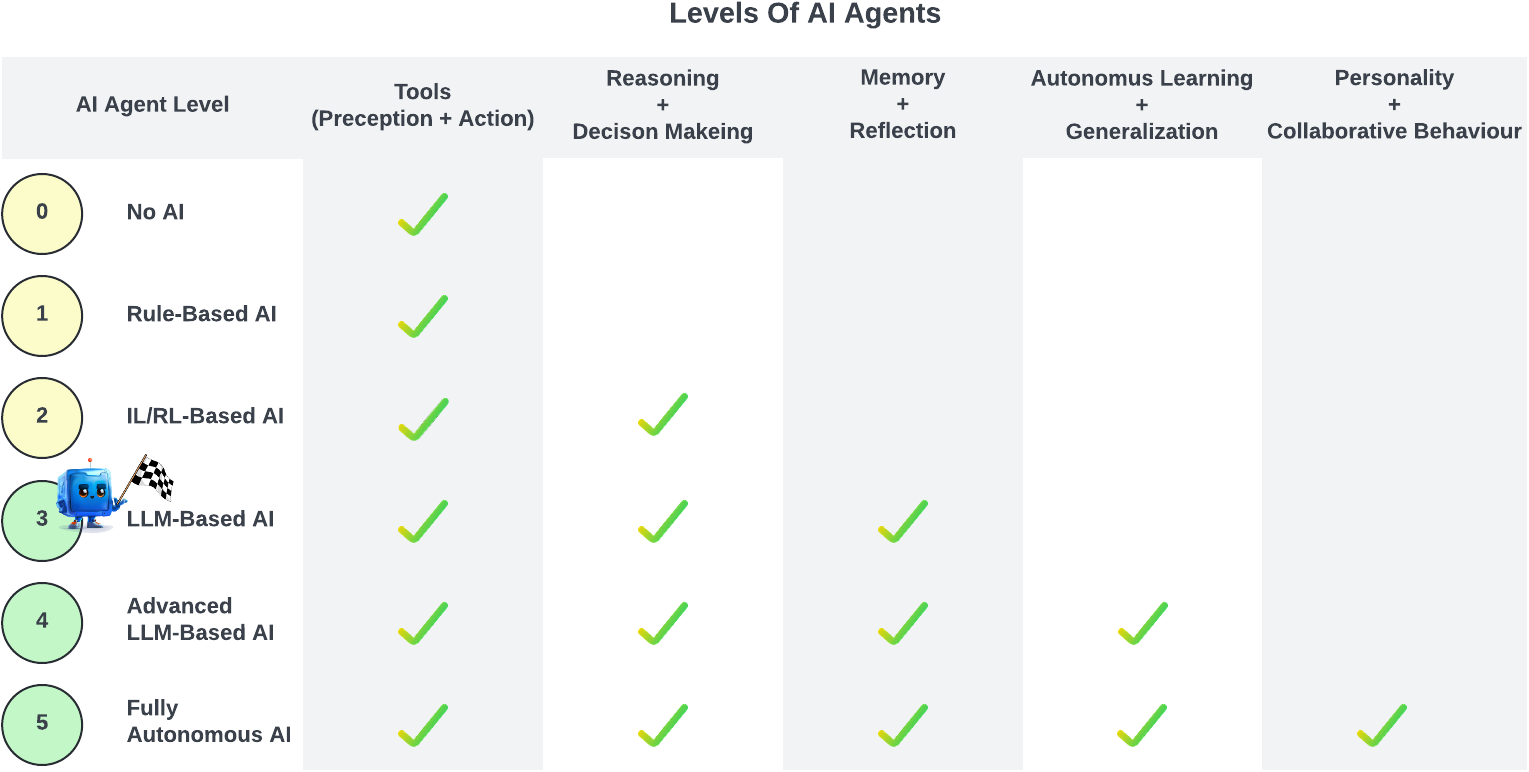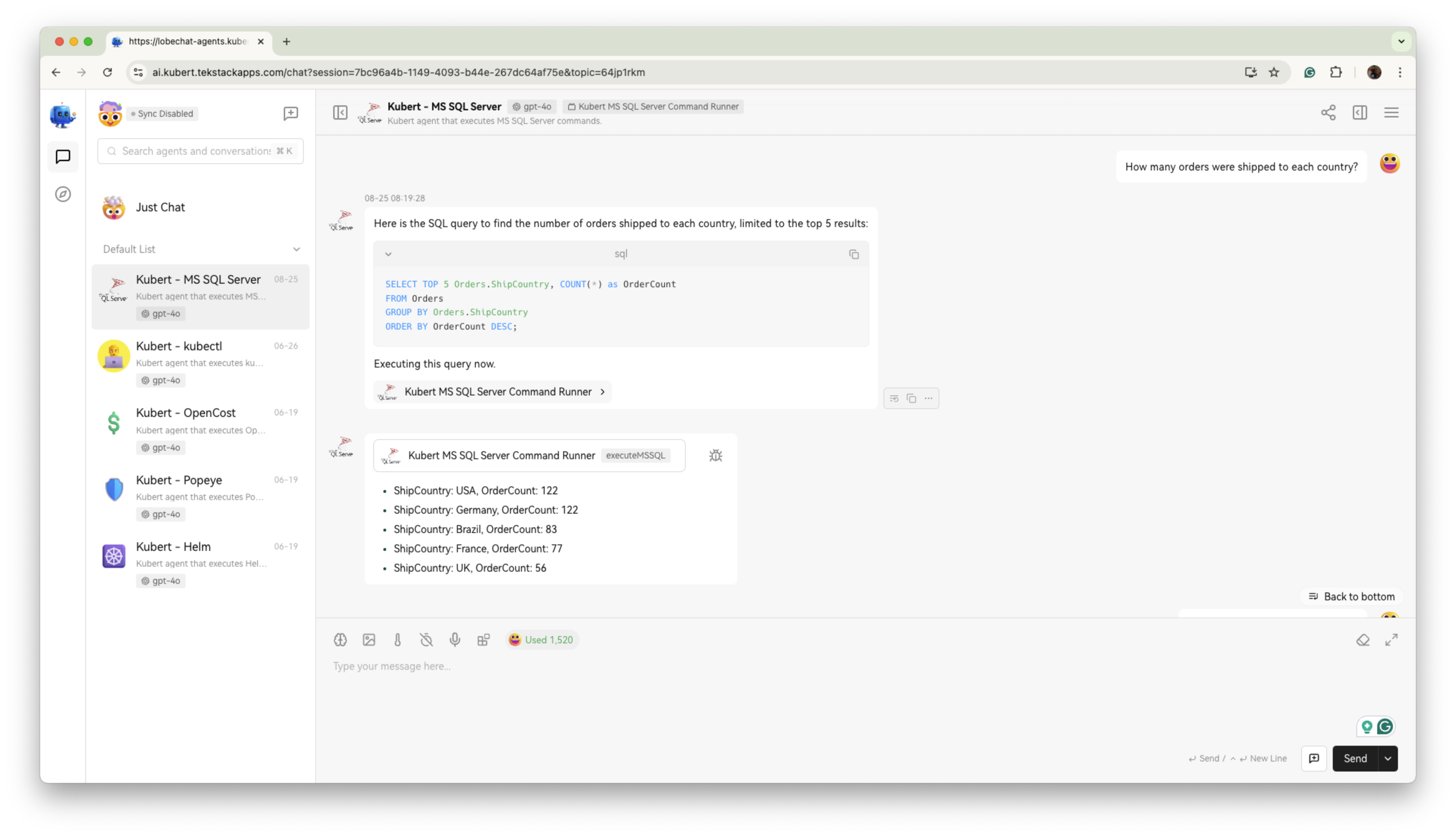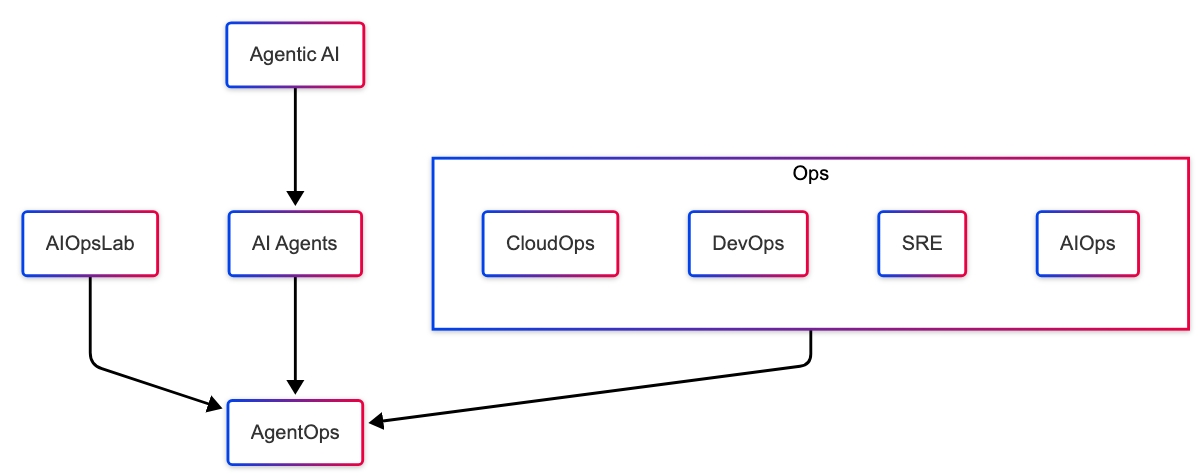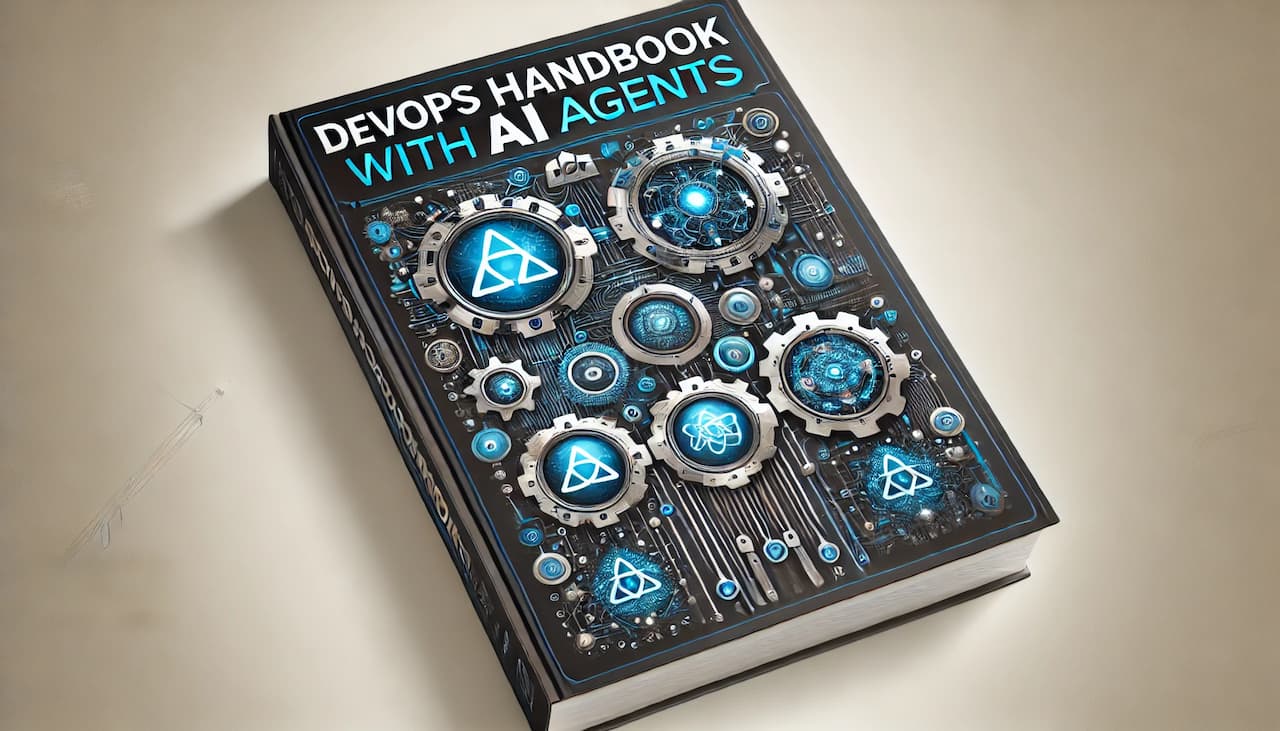
What is an AI Agent? Kubert DevOps AI Agents for Kubernetes
As artificial intelligence (AI) capabilities continue to expand, one concept gaining significant traction is the AI agent. These intelligent systems transform industries by automating processes, making autonomous decisions, and driving efficiencies. In cloud environments like Kubernetes, AI agents, particularly Kubert DevOps AI agents, are revolutionizing how we manage complex workflows, optimize resources, and improve operational performance.
But before diving into Kubert DevOps AI agents and their impact on Kubernetes, it’s essential to understand the broader question: What is an AI agent?
What is an AI Agent?
An AI agent is a digital entity designed to autonomously perceive its environment, analyze data, make decisions, and take actions to achieve specific goals. These systems go beyond basic automation by leveraging advanced machine learning models, natural language processing, and sophisticated algorithms. Their purpose is to follow instructions and learn from their interactions, adapt to new information, and improve functions typically associated with human intelligence over time. This adaptability is a key feature that differentiates them from traditional software programs.
AI agents are autonomous intelligent systems that can think, learn, and act independently. What distinguishes them from traditional software programs is their ability to operate autonomously, often in dynamic environments where real-time decisions are necessary. These agents are utilized in diverse industries, including healthcare and finance, but their significance in DevOps and cloud management is especially notable.
What is a Kubert DevOps AI Agent?
The direct answer is that the Kubert AI Agent is a DevOps AI agent specifically designed for the Kubernetes environment. More than just another tool in the DevOps arsenal, Kubert is a sophisticated AI system that integrates with Kubernetes, automating and optimizing complex workflows to boost operational efficiency. By automating tasks such as scaling, deploying, and managing resources, Kubert reduces human error, streamlines workflows, and allows DevOps teams to focus on higher-level strategic goals.
The pioneering work of Alan Turing, who in 1950 proposed the Turing Test as a measure of machine intelligence, inspired the idea of AI agents. According to Turing, if a machine could converse with a human without revealing its non-human nature, it could be considered intelligent. The search for non-human intelligence has driven decades of AI research and innovation, developing increasingly sophisticated agents striving to pass this test.
Hollywood has also significantly shaped our understanding of AI agents. Films like Ex Machina explore the ethical and philosophical questions surrounding the creation of intelligent machines. In the movie Ava, the AI robot performs tasks and engages in human-like interactions. Ava passed the Turing test.
Characteristics of an AI Agent
- Perception: AI agents gather and interpret data from their environment, much like humans use their senses to understand the world around them. This data can come from various sources, including sensors, databases, and user inputs.
- Decision-Making: Leveraging advanced algorithms and, increasingly, large language models (LLMs), AI agents process the data they collect to make informed decisions. These decisions guide their actions, which align with the goals they are programmed to achieve.
- Action: After deciding on a course of action, AI agents execute tasks that range from simple operations, like sending commands to a system, to more complex behaviours, such as interacting with humans or manipulating physical objects in the real world.
- Autonomy: AI agents operate autonomously and can function without continuous human intervention. This autonomy allows them to adapt to new situations, learn from their experiences, and improve.
- Learning and Adaptation: Advanced AI agents can learn from their interactions with the environment. They can refine their decision-making processes and adapt to changing conditions like humans learn from experience.
- Interaction: AI agents can interact with other agents, humans, or systems. These interactions can be collaborative or competitive and are crucial for functioning in environments requiring teamwork or negotiation.
Levels Of Agency
We categorize AI agents into continuum or hierarchical levels of agency. This categorization is inspired by research, Levels of AI Agents: from Rules to Large Language Models and Personal LLM Agents: Insights and Survey about the Capability, Efficiency and Security, which draws parallels between the levels of autonomous driving and AI agents’ capabilities. By understanding these levels, we can better appreciate where Kubert AI Agents fit within the broader landscape of AI agents.
Note: The distinction between an AI assistant and an AI agent is often nuanced. The difference lies in the level of agency each possesses. We consider the AI Assistant to be an AI agent on the continuum.
Components of AI Agents Levels
Tools (Perception + Action): The agent can understand its environment and take appropriate actions based on that understanding.
- Perception involves gathering data from sensors, databases, or user inputs.
- Action refers to tasks such as interacting with users or controlling devices.
- Tools are the mechanisms or technologies that enhance the agent’s perception and action, enabling it to perform more complex tasks efficiently.
Reasoning + Decision Making: The agent’s capacity to analyze information and make decisions.
- Reasoning is about interpreting data and drawing conclusions.
- Decision-making involves selecting and executing the best action based on reasoning.
Memory + Reflection: The agent remembers past interactions and uses that knowledge to improve its future behaviour.
- Memory stores information from past experiences.
- Reflection uses this stored information to adapt and refine future decisions and actions.
Autonomous Learning + Generalization: The agent learns from experience and applies that learning to new situations.
- Autonomous Learning involves improving performance without explicit programming.
- Generalization means applying learned knowledge to different, unseen situations.
Personality + Collaborative Behavior: The agent is more relatable and effective in team settings.
- Personality involves consistent traits that make interactions with humans feel natural.
- Collaborative behaviour is the ability of AI to work well with others, share information, and coordinate actions to achieve shared goals.
Levels Of Agents
Level 0 – No AI (Basic Assistants): Agents function as tools with predefined actions. They can perform specific tasks but lack any form of decision-making or learning capability. These systems are entirely dependent on user input for every action they take.
DevOps Example: CI/CD pipeline that runs predefined scripts for building, testing, and deploying code. The pipeline executes tasks like compiling code or running tests but requires manual intervention for any decision-making or adaptation to new conditions.
Level 1 – Rule-Based AI (Advanced Assistants): Agents at this level follow predefined rules (like if-then statements) to perform tasks. They don’t “make decisions” in the complex sense of weighing multiple factors or learning from experience. Instead, they execute actions based on simple conditional logic. While they can handle more complex tasks than Level 0 systems, their actions are strictly determined by their initial programming, with no true adaptability or reasoning beyond these basic rules.
DevOps Example: An automated deployment script that deploys code to a staging environment only if all tests pass. The script follows a set of predefined rules but cannot be optimized based on real-time feedback or changing conditions in the environment.
Level 2 – IL/RL-Based AI (Adaptive Assistants): At this stage, agents exhibit autonomy by learning from user behaviour or interactions through Imitation Learning (IL) or Reinforcement Learning (RL). They can improve their performance based on feedback and past experiences, allowing for more personalized and context-aware interactions.
DevOps Example: A recommendation engine within a CI/CD pipeline that suggests the optimal deployment strategy based on previous deployments and their outcomes. The system learns from past data to improve its recommendations, adapting to the specific needs of different applications and environments.
Level 3 – LLM-Based AI (Emerging Agents): At this level, LLM-based systems like ChatGPT exhibit more sophisticated reasoning, memory, and decision-making capabilities. They can perform tasks autonomously within a broader scope, learning and adapting beyond simple rule-following.
DevOps Example: A conversational AI agent integrated into the DevOps workflow that can interpret natural language commands to perform tasks like spinning up new environments, debugging deployment issues, or optimizing resource allocation. The AI agent learns from each interaction, improving its ability to manage increasingly complex tasks autonomously.
Level 4 – Advanced LLM-Based AI (Autonomous Agents): AI agents at this level possess significant autonomy. They can execute tasks and set goals based on the user’s objectives. They can learn and generalize from limited data, adapting to new environments and challenges.
DevOps Example: An AI-driven DevOps agent that executes tasks based on user input and proactively suggests optimizations, sets performance benchmarks, and autonomously manages the entire CI/CD pipeline. The agent can anticipate potential issues and adjust to prevent them, learning continuously to enhance performance.
Level 5 – Fully Autonomous AI (True Agents): The pinnacle of AI agency, fully autonomous agents operate almost entirely independently. They can collaborate, negotiate, and exhibit personality traits, making complex decisions considering long-term goals and ethical implications.
DevOps Example: A fully autonomous DevOps platform that manages all aspects of software delivery, from code integration to deployment, monitoring, and scaling, without human intervention. This agent can handle unexpected events, negotiate resource allocation among multiple services, and ensure compliance with security and regulatory requirements while optimizing cost and performance.
The Kubert AI Agent Structure
The Kubert AI Agent is a versatile and intelligent DevOps AI Agent with a level 3 agency that manages complex cloud resources, particularly within Kubernetes environments. As depicted in the image above, the structure of a Kubert AI Agent consists of several core components. Each component is crucial in how the AI agent perceives, decides, and acts within its environment. All these components work together to create a cohesive and effective AI agent that integrates seamlessly with Kubernetes environments.
Interface
The Interface is the entry point for interactions with the Kubert AI Agent. It allows users or other systems to communicate with the agent through natural language prompts. The interface interprets and translates these inputs into a format the AI agent can process. Kubert has a web application interface and supports other interfaces, including messaging systems like Slack.
LLM
The LLM processes natural language inputs, understands context, and generates appropriate responses or actions. By leveraging its ability to comprehend and generate human-like text, the LLM enables the agent to handle various tasks, making it versatile in various scenarios.
Goal
The Goal component defines the objectives the Kubert AI Agent aims to achieve. These goals guide the agent’s decision-making processes and actions. Whether the goal is to optimize resource allocation, deploy services, or manage configurations, this component ensures that the agent remains focused on achieving the desired outcomes.
Action
The Action component is where the Kubert AI Agent executes its decisions. This component interacts directly with tools to perform tasks such as deploying services, scaling resources, or modifying configurations. The agent’s effectiveness largely depends on its ability to take precise and timely actions within the Kubernetes environment.
Tools
The Tools component refers to the mechanisms and technologies the Kubert AI Agent utilizes to enhance its perception and action capabilities. Tools are essential for the agent to perform more complex tasks efficiently. In the Kubernetes environment, Kubert leverages many of the open-source tools to perform actions, and these include security tools like HashiCorp Vault, Cert Manger, and Falco, as well as observability tools, which include Prometheus, Loki, OpenCost and many others.
Memory
The Memory component enables the Kubert AI Agent to retain information from past interactions and decisions. This stored knowledge is crucial for reflection, allowing the agent to learn from its experiences and improve its performance over time. Memory ensures that the agent can maintain continuity in its tasks and adapt based on previous outcomes. Kubert AI Agent memory comes in multiple flavours: short-term, long-term and a knowledge base (RAG).
Conclusion
The Kubert AI Agent represents a significant advancement in the integration of AI with DevOps and Kubernetes management. By combining sophisticated language processing, goal-driven actions, and continuous learning, Kubert AI Agents are well-equipped to tackle the complexities of modern cloud environments. As we continue to refine and expand these capabilities, the potential for AI agents in automating and optimizing operations is immense.
The journey of AI in DevOps is just beginning, and the Kubert AI Agent is at the forefront of this exciting evolution.
Learn more about our secure AI agent development: Build Custom AI Agents with Kubert.






